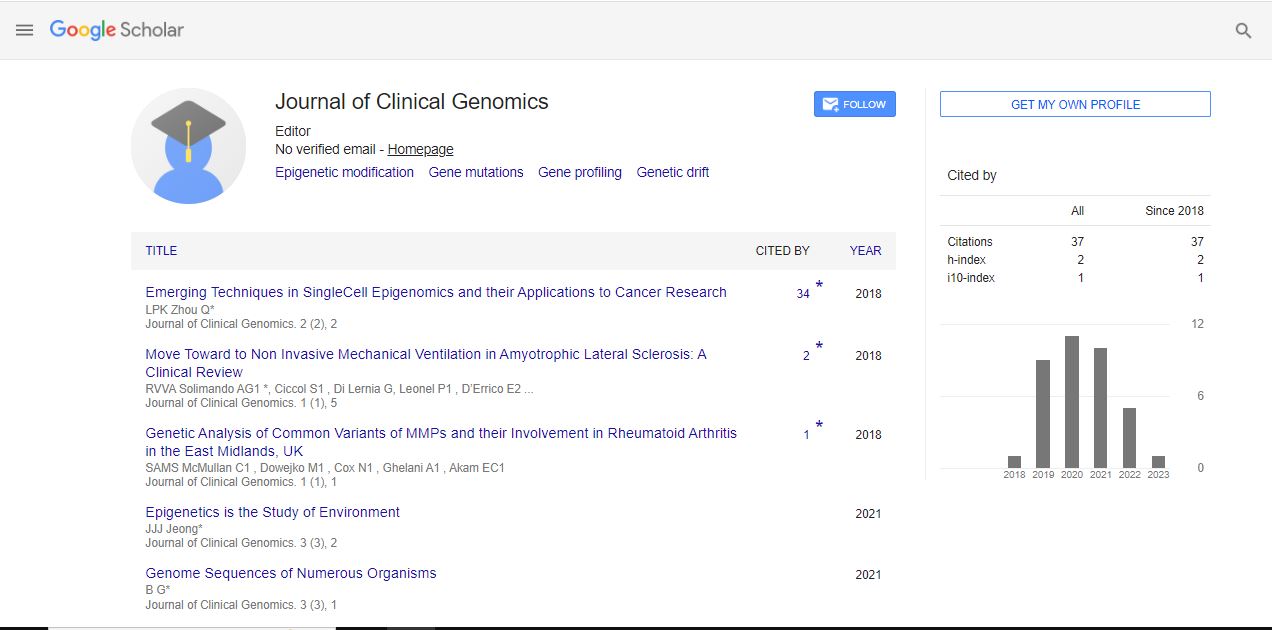Opinion Article, J Chromatography Res Vol: 6 Issue: 1
Development of Novel Stationary Phases for Capillary Electrochromatography
Laura Cristina*
1Department of Pharmacy, Rutgers University, New York, United States of America
*Corresponding Author: Laura Cristina
Department of Pharmacy, Rutgers
University, New York, United States of America;
E-mail: crsistina@info.edu
Received date: 14 February, 2023, Manuscript No. JCGR-23-95883;
Editor assigned date: 20 February, 2023, PreQC No. JCGR-23-95883 (PQ);
Reviewed date: 10 March, 2023, QC No. JCGR-23-95883;
Revised date: 28 March, 2022, Manuscript No JCGR-23-95883 (R);
Published date: 07 April, 2023, DOI: 10.4172/jcgr.1000052.
Citation: Cristina L (2023) Development of Novel Stationary Phases for Capillary Electrochromatography. J Chromatography Res 6:1.
Keywords: Capillary Electrochromatography
Description
Capillary Electrochromatography (CEC) has emerged as a powerful tool for the separation and analysis of complex mixtures due to its high separation efficiency and compatibility with a wide range of detection methods. The stationary phase used in CEC plays an import nat role in separation performance, and the development of novel phases has been an active area of research in recent years. The stationary phase used in CEC typically consists of particles with a size range between 1 and 10 μm, packed into a capillary column. The surface of the particles is modified with various chemical groups to provide selectivity for different analytes. The most commonly used stationary phases in CEC are silica-based materials, such as octadecylsilane and octylsilane. These materials have been extensively studied and optimized for different separation modes, such as reversed-phase chromatography and hydrophilic interaction chromatography. Despite the success of silica-based materials, there are still limitations in terms of selectivity and stability under certain conditions, such as high pH or organic solvent gradients. Therefore, the development of novel stationary phases with improved properties has been an active area of research in CEC. One approach to developing novel phases for CEC is to use polymeric materials as the packing material. Polymer-based stationary phases have several advantages over silica-based materials, including higher stability, flexibility in functionalization, and improved selectivity. For example, poly(styrene-divinylbenzene) particles have been used as a stationary phase in CEC for the separation of small molecules and biomolecules. The surface of PS-DVB particles can be modified with various functional groups, such as carboxylic acid, amine, and hydroxyl groups, to provide different selectivities. Moreover, PS-DVB particles have been shown to have higher stability and lower electroosmotic flow than silica-based materials, making them suitable for the separation of basic compounds.
Another approach to developing novel stationary phases for CEC is to use monolithic columns instead of packed columns. Monolithic columns consist of a single piece of porous material with interconnected channels, which provides higher permeability and faster mass transfer than packed columns. Monolithic columns have been prepared from various materials, such as silica, organic polymers, and hybrid materials. For example, a monolithic column prepared from a hybrid material of silica and poly ethylene glycol has been used for the separation of small molecules and peptides. The PEG component provides hydrophilicity and steric exclusion, while the silica component provides mechanical stability and chemical functionality. In addition to polymeric and monolithic materials, other novel stationary phases have been developed for CEC. For example, Carbon Nano Tubes (CNTs) have been used as a stationary phase in CEC due to their unique electrical and mechanical properties. CNTs can be functionalized with various chemical groups, such as carboxylic acid, amine, and thiol groups, to provide different selectivities. Moreover, CNTs have high surface area, low electroosmotic flow, and high mechanical strength, making them suitable for the separation of a wide range of analytes. Metal-Organic Frameworks MOFs are porous materials composed of metal ions or clusters and organic ligands, which can provide tunable pore size and functionality. They have been used as stationary phases in CEC for the separation of small molecules and peptides. The surface of MOFs can be modified with various chemical groups, such as carboxylic acid, amine, and thiol groups, to provide different selectivities. Moreover, MOFs have high stability, selectivity, and separation.
 Spanish
Spanish  Chinese
Chinese  Russian
Russian  German
German  French
French  Japanese
Japanese  Portuguese
Portuguese  Hindi
Hindi 